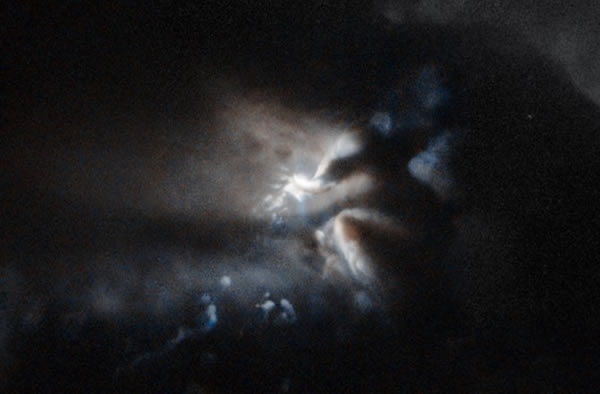Hubble Captures Eerie Light From Embryonic Star
Hubble captures the light from a star being born inside the dark cloud LDN 43 -- a massive blob of gas, dust, and ices, gathered 520 light-years from Earth in the constellation of Ophiuchus (The Serpent Bearer). Click to enlarge.
The Hubble Space Telescope has probed deep into a dense cloud of gas and dust to reveal the light of a stellar birthing.
This photograph is of LDN 43, a massive nebula located 520 light-years from Earth in the constellation of Ophiuchus. It could easily depict the sunset in some mystical world (indeed, the Hubble team that released this image nicknamed the scene "Sunset in Mordor"), but it is in fact the light being generated by a pre-main sequence star called RNO 91. In other words, it's the light produced by a dense ball of material heated by gravitational contraction, just before fusion is triggered in the core.
If you ever wanted to see a stellar ultrasound of a stellar embryo, this would be pretty close.
Although RNO 91 hasn't quite reached the age that it is capable of fusing hydrogen, it can still pack quite a punch. It's currently emitting powerful X-rays producing strong stellar winds, blowing away nearby gas and dust. Interestingly, astronomers have also spotted a dusty disk surrounding the star, a precursor to the creation of orbiting planets.
So Hubble has not only imaged the birthing of a star, it has also given us a very privileged look into the creation of a new star system from the dense fog of a stellar nursery.(Aug 8, 2013 03:15 PM ET // by Ian O'Neill)












